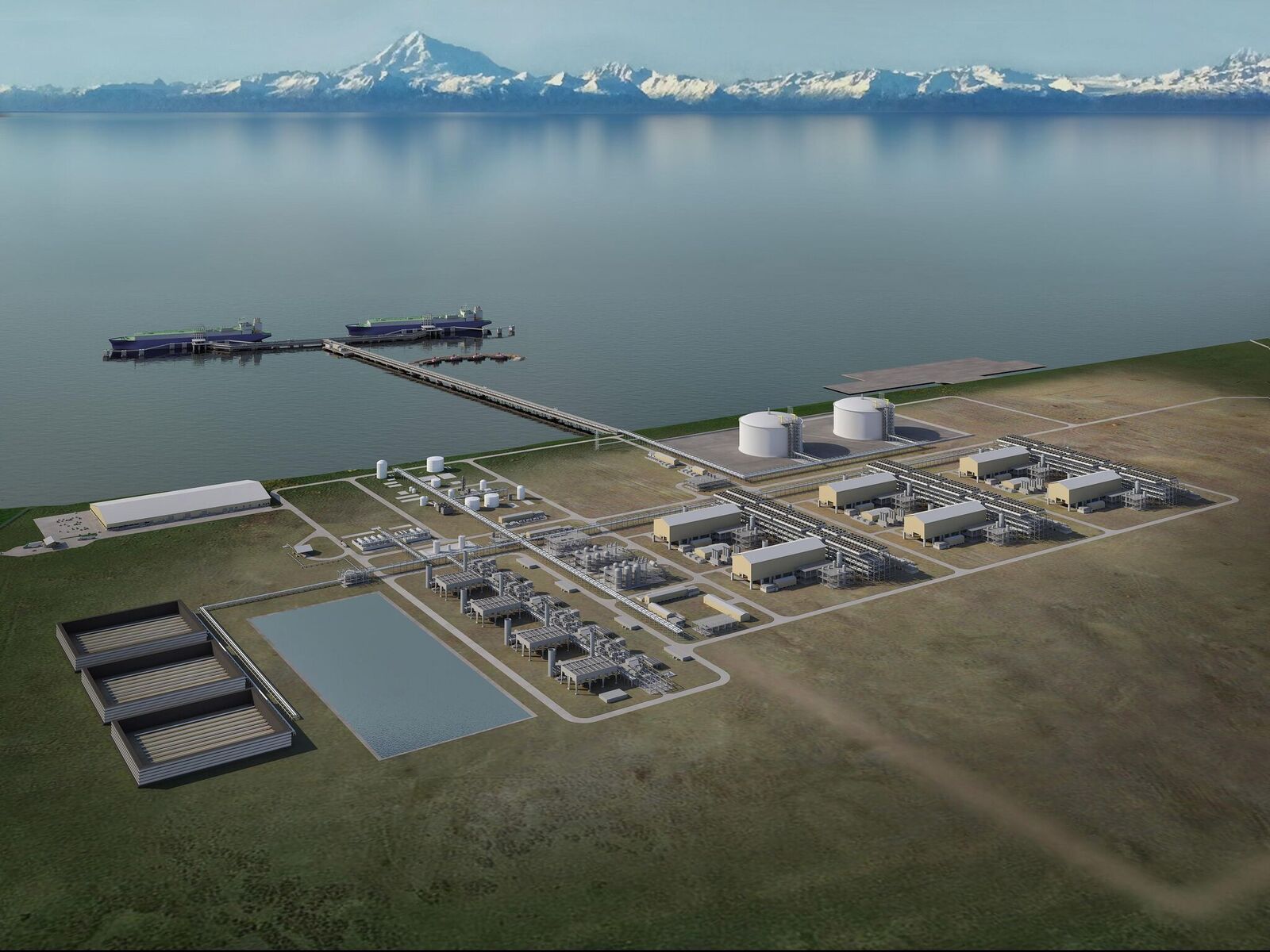(Bloomberg) —
Activity appears to have slumped at Russia’s only construction yard for liquefied natural gas modules, another sign of how Western sanctions are thwarting the country’s ambition to become a top player in this key energy market.
Novatek PJSC’s Belokamenka facility on the Barents Sea, dubbed “the plant to make LNG plants,” looks to have been largely mothballed. In late October and the first days of November, night-time light intensity at the plant was the lowest since 2019, according to satellite observations compiled and analyzed by the Earth Observation Group at the Payne Institute for Public Policy in Colorado.
The site was intended to become a unique hub for domestic assembly of so-called LNG trains – modular processing plants capable of super-chilling natural gas into its liquid form. But after building two trains for Arctic LNG 2, Russia’s newest export facility, there’s no sign of activity that would be needed to further expand capacity in the near future.
That’s because of US and European efforts to restrict Moscow’s energy revenue after its invasion of Ukraine. Western powers have imposed sanctions on Novatek and all its future LNG projects, including production plants, trans-shipment facilities and tankers.
“The average brightness of electric lights at the facility has fallen by 75% compared to 2021 to 2023,” indicating a sharp decline in industrial activity at Belokamenka, said Dr. Mikhail Zhizhin, an EOG researcher with years of experience in scientific programming for remote sensing of the night side of the Earth.
Novatek did not respond to a Bloomberg request for comment on the current level of activity at Belokamenka.
Rather than building LNG production facilities from scratch in the challenging Arctic climate, Novatek came up with an idea of assembling them in milder conditions near the port of Murmansk. The yard at Belokamenka built the first two trains for Arctic LNG 2 each consisting of 14 modules mounted on a giant floating gravity-based platform.
Upon completion — one in July 2023 and one this year — they were towed around 1,500 nautical miles across the Northern Sea Route by a small fleet of tug vessels and docked at the Gydan peninsula, a journey that lasted around three weeks.
Those trains were successfully installed at Arctic LNG 2, with one producing LNG until the first half of October, when Western sanctions made both shipping and selling cargoes difficult and largely shut down the facility. A third train, only partly built, remains at Belokamenka, satellite images show. Russia’s RBC newspaper reported in August that Novatek was looking to wind down operations at Belokamenka through 2025 to early 2026.
Satellites have been monitoring night-time surface lights around the world since the 1970s, with the data well established as a proxy for on-ground activities. It has been used to estimate industrial developments, population movements, or the economies of regions and countries. The technique provides enough granular data to assess the performance of individual facilities, such as lumber mills in British Columbia.
At Novatek’s construction yard, light intensity was highest from 2022 to 2023, coinciding with the period when the facility was building two trains for Arctic LNG 2, data from the Payne Institute show. The subsequent dimming of the lights at Belokamenka signals a pause in construction at the site and a setback for Russia’s goal of taking as much as 20% of the global LNG market within the next decade.
“Future Russian LNG projects were also set to use the Belokamenka construction center to pre-assemble modules,” said Laura Page, natural gas and LNG analyst at research firm Kpler. The lack of activity at the facility indicates a delay in the implementation of these projects that “were deemed critical for Russia to achieve its goal of reaching 100 million tons a year of LNG export capacity by 2030.”
© 2024 Bloomberg L.P.

 Join The Club
Join The Club










